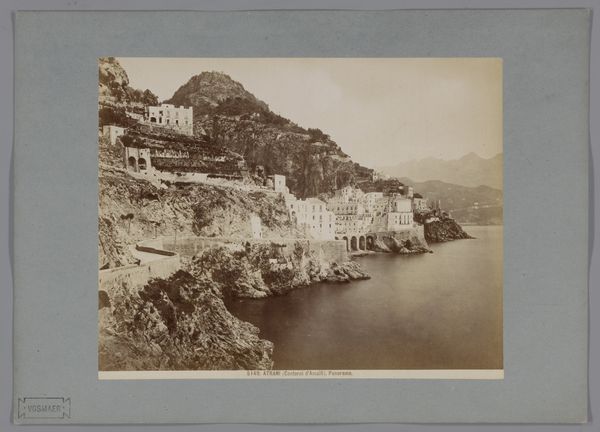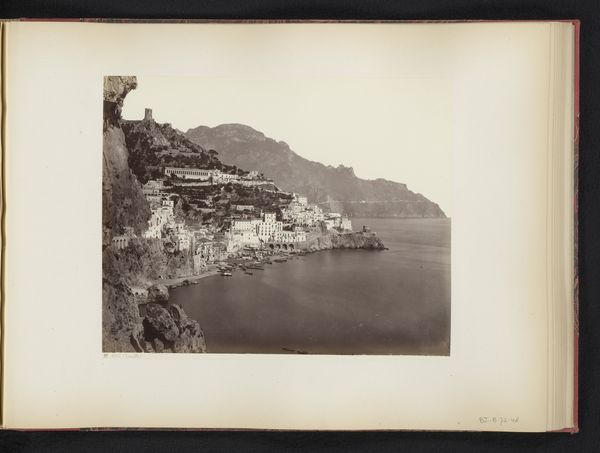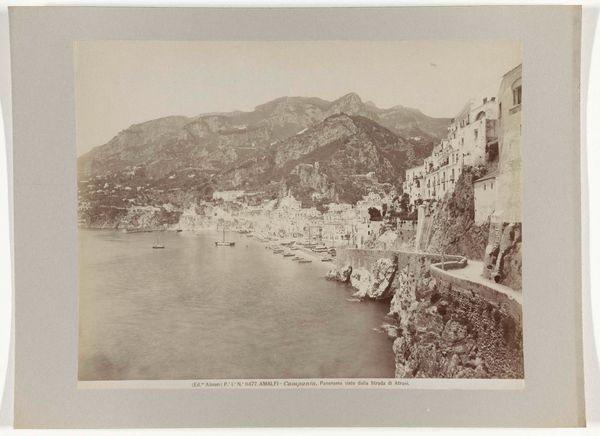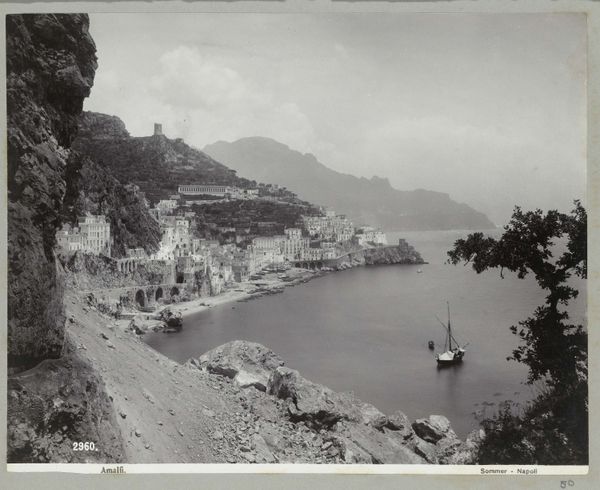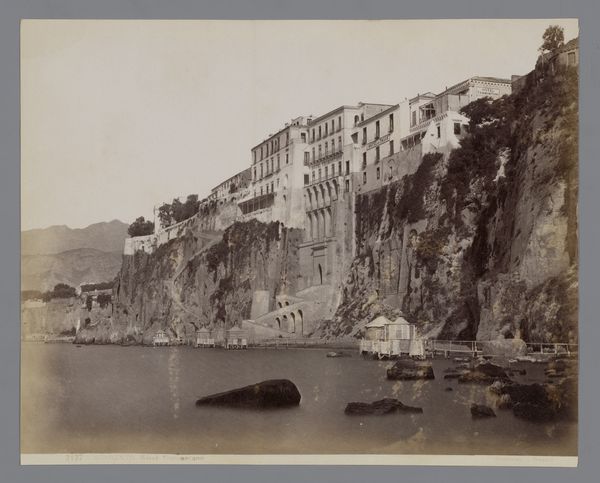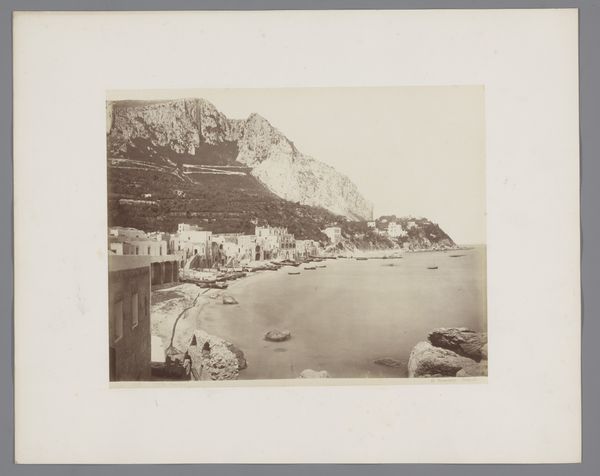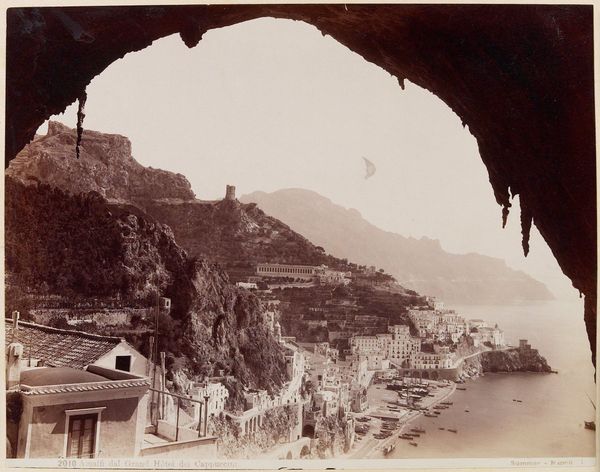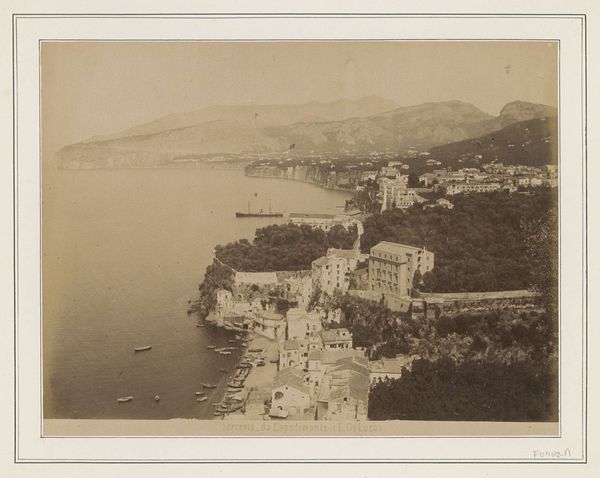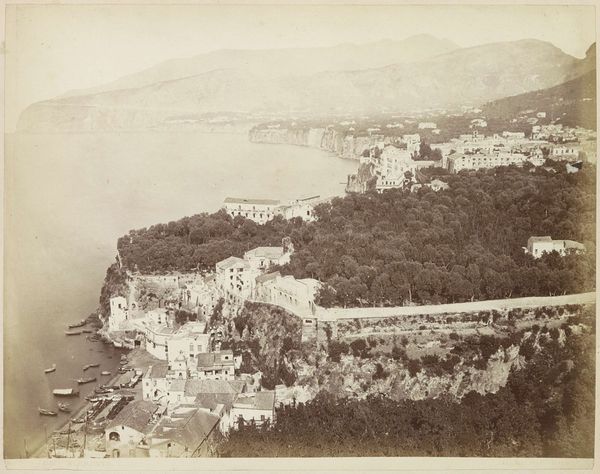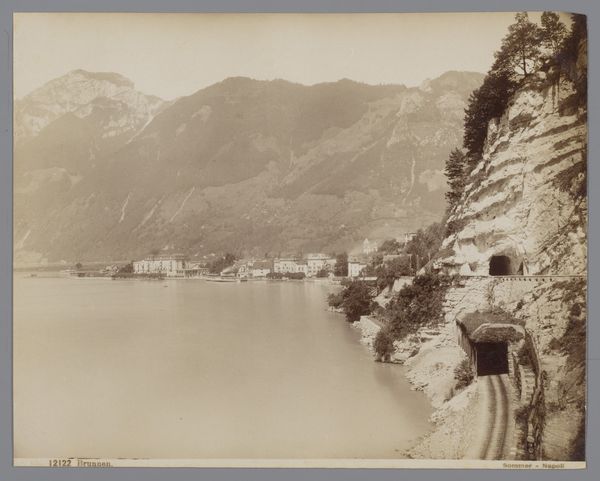
photography, gelatin-silver-print
#
16_19th-century
#
pictorialism
#
landscape
#
photography
#
gelatin-silver-print
#
cityscape
Dimensions: height 205 mm, width 256 mm, height 248 mm, width 318 mm
Copyright: Rijks Museum: Open Domain
Editor: Here we have Giorgio Sommer’s “View of Amalfi and the Bay,” taken in 1899. It's a gelatin silver print. I’m struck by the somewhat softened focus, which gives the landscape this timeless, almost dreamlike quality. What social and cultural narratives might be embedded in a seemingly straightforward cityscape like this? Curator: That’s a perceptive observation about the pictorial quality. Let’s consider how travel photography of the late 19th century reinforced certain power dynamics. Who had access to these idyllic landscapes? Sommer, although Swiss-Italian, operated within a European market that exoticized and commodified places like Amalfi for a largely Western, affluent audience. Do you see the image then less as a neutral representation and more as a constructed gaze? Editor: That's fascinating. So, the romantic view wasn't just about aesthetics, but about accessibility and privilege. It’s a selective presentation. The people who actually lived there are almost invisible; this Amalfi is designed for consumption. Curator: Precisely. And think about how this romanticized vision of Italy, propagated through photographs and other media, contributed to a broader narrative of European cultural dominance. These kinds of landscape photographs weren't just documentation, they were actively shaping perceptions, confirming class distinctions. In what ways does this realization impact your own viewing? Editor: It completely reframes it! I initially saw a beautiful, serene vista. But now, I recognize the undercurrents of colonialism and economic disparity woven into this seemingly innocent image. It definitely encourages me to question the narrative being presented. Curator: Indeed. It compels us to interrogate whose stories are being told and, perhaps more importantly, whose are being omitted. Reflecting on images like Sommer’s makes me realize just how important critical contextualization can be when talking about any art, whatever the medium or place. Editor: I agree! I came expecting to talk about photography, and now I'm thinking about social structures and representation. This was much more thought-provoking than I anticipated.
Comments
No comments
Be the first to comment and join the conversation on the ultimate creative platform.
